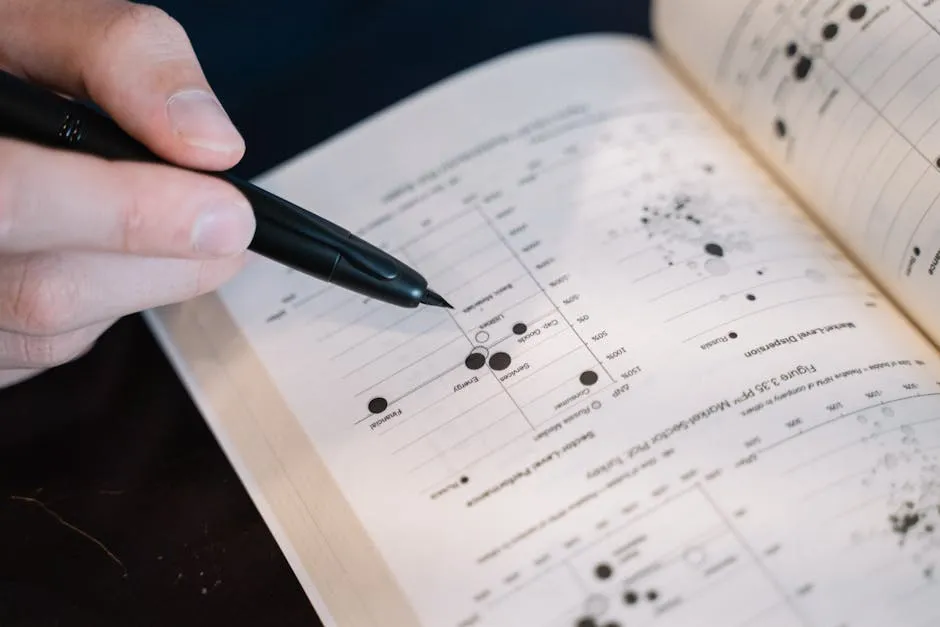Introduction
Statistics is more than just numbers; it’s the backbone of informed decision-making. In education and various industries, statistics helps us understand trends, make predictions, and solve complex problems. Whether you’re analyzing the latest sports stats or conducting a research study, statistical knowledge is invaluable.
Enter “The Practice of Statistics,” a leading textbook specifically designed for AP Statistics students. This book has become a staple in classrooms, offering a robust foundation in statistical concepts. With its focus on real-world applications, it’s not just a textbook; it’s your companion in navigating the world of statistics. You can grab your own copy of The Practice of Statistics 6th Edition today!
The 6th edition brings exciting updates. Authors Daren S. Starnes and Josh Tabor have enhanced existing content to better align with current educational needs. You can expect new examples, engaging exercises, and a focus on technology integration. This edition ensures that students are not only prepared for exams but also equipped for practical applications in their future careers.
If you want to elevate your statistical calculations, consider investing in a TI-84 Plus CE Graphing Calculator. This handy gadget is a game changer for anyone tackling AP Statistics. It simplifies complex calculations, making it easier to focus on understanding concepts rather than getting lost in numbers.

For a deeper understanding of statistical learning, check out this resource: an introduction to statistical learning with python book length.
Authors and Their Background
Daren S. Starnes
Daren S. Starnes holds a prominent position in the world of statistics education. With over 25 years of teaching experience, he has significantly influenced the field. He earned his Master’s degree in Mathematics from the University of Michigan and his Bachelor’s degree from the University of North Carolina at Charlotte.
Starnes has not only taught a variety of statistics courses but has also played an integral role in shaping the AP Statistics curriculum. As a Reader and Table Leader for the AP exam for over 20 years, he knows the ins and outs of what students need to succeed. His dedication extends beyond the classroom; he’s a consultant for the College Board and has led workshops nationwide.
His contributions to statistics education include co-authoring multiple textbooks. Starnes is an active member of several professional organizations, such as the National Council of Teachers of Mathematics and the American Statistical Association. His passion for teaching and commitment to helping students shine through in “The Practice of Statistics,” where he makes complex concepts accessible and engaging.

Josh Tabor
Josh Tabor is another key figure in the realm of statistics education. With 26 years of teaching experience, he has a wealth of knowledge to share. He graduated with a Bachelor’s degree in Mathematics from Biola University and has consistently demonstrated his commitment to student success.
Tabor’s accolades include being a finalist for Arizona Teacher of the Year in 2011. His expertise in AP Statistics development has made him a valuable resource for educators across the country. He frequently leads workshops and speaks at various conferences, sharing innovative strategies for teaching statistics.
In addition to his teaching role, Tabor has co-authored several textbooks, furthering his impact on the field. His contributions to “The Practice of Statistics” align closely with Starnes’ vision for making statistics relatable and applicable. Together, they ensure that students are not only prepared for exams but are also equipped with skills for real-world situations.
With Starnes and Tabor at the helm, “The Practice of Statistics” 6th edition is not just a textbook; it’s a powerful tool for unlocking statistical understanding and fostering a love for the subject. If you’re looking to supplement your knowledge, consider Statistics for Dummies. This book is a friendly guide that simplifies complex statistical concepts, making them approachable for everyone.

Key Features of the 6th Edition
“The Practice of Statistics” 6th Edition stands out with its array of features designed to support students and educators in mastering AP Statistics. Let’s break down the key components that make this edition a powerful tool for learning.
Enhanced Problem-Solving Tools
One of the crowning jewels of this edition is its 175 worked examples. These aren’t just random snippets of information; they are meticulously crafted to illuminate complex concepts. Each example comes with a clear explanation, guiding students through the problem-solving process. This approach demystifies statistical methods and encourages students to think critically.
But wait, there’s more! The textbook boasts over 1,600 practice problems. Yes, you read that right. This treasure trove of exercises is organized by chapter, ensuring a systematic approach to learning. Each section includes “Check Your Understanding” questions, allowing students to self-assess their grasp of the material before moving on. This feature promotes confidence and cultivates a sense of accomplishment as learners tackle each problem.

To further enhance your understanding of statistics, consider reading AP Statistics Crash Course. This resource provides a quick and efficient review to prepare you for the exam, ensuring you’re ready to tackle any question that comes your way.
Integrated AP® Support
Preparing for the AP Statistics exam? Fear not! This edition incorporates cumulative AP practice tests sprinkled throughout the text. These tests are strategically placed, gradually building complexity as students progress. They mimic the real exam experience, allowing students to familiarize themselves with the format and types of questions they’ll encounter.
Additionally, the “Check Your Understanding” exercises serve as excellent self-assessment tools. After working through a chapter, students can gauge their knowledge and identify areas needing improvement. This feedback loop is essential for effective learning and exam preparation.

Technology Integration
In today’s tech-savvy world, integrating technology into education is crucial. “The Practice of Statistics” 6th Edition rises to the occasion with its “Technology Corners.” These sections provide step-by-step instructions for using TI-84 and other calculators to conduct statistical analyses. They make technology accessible, so students can focus on understanding concepts rather than deciphering complex calculator functions.
Moreover, the 6th Edition offers a wealth of online resources. Students and instructors can access a variety of supplementary materials, including videos, practice quizzes, and additional exercises. These digital tools enhance the learning experience and cater to diverse educational needs, ensuring that every student has the support they require.
If you’re interested in learning R, consider picking up R for Data Science. This book is a fantastic guide for anyone looking to dive into data analysis with R, making it an essential companion for your statistical journey.

In conclusion, the 6th Edition of “The Practice of Statistics” is not just a textbook; it’s a comprehensive learning package. With its enhanced problem-solving tools, integrated AP support, and technology integration, it prepares students to tackle the challenges of statistics head-on. Whether you’re a student aiming for a top score on the AP exam or an educator seeking to inspire your classroom, this edition equips you with everything you need to succeed.
Comprehensive Content Overview
Structure of the Textbook
“The Practice of Statistics” 6th Edition is a well-structured resource designed to cater to the needs of AP Statistics learners. With chapters organized logically, the textbook covers essential statistical concepts from basic data analysis to advanced inferential techniques. Here’s how the content is divided:
Chapter 1: Data Analysis
This chapter introduces students to the art of data analysis. It emphasizes the importance of understanding data types and how to effectively summarize and visualize data. Key concepts include categorical data analysis and graphical representations. Students learn to make sense of data, setting the foundation for future chapters.

Chapter 2: Modeling Distributions of Data
In this chapter, students learn to model distributions, a crucial concept in statistics. It covers how to describe data distributions using measures such as mean, median, and standard deviation. The chapter also introduces density curves and normal distributions, essential for understanding more complex statistical ideas.
Chapter 3: Describing Relationships
This chapter focuses on the relationship between variables. Students explore scatterplots, correlation, and regression analysis. By the end, they can describe how one variable affects another and make predictions based on that relationship. The chapter demystifies some of the more intimidating aspects of regression.
Chapter 4: Collecting Data
Data collection is vital for any statistical analysis. This chapter delves into different sampling techniques, surveys, and experiments. Students learn how to design effective studies and recognize biases that can affect data quality. This knowledge is crucial for anyone looking to conduct reliable research.

Chapter 5: Probability
Chapter 5 introduces students to probability, the backbone of statistical inference. It covers foundational concepts such as randomness, probability rules, and conditional probability. Students learn how to calculate probabilities for various events, preparing them for more complex analyses.
Chapter 6: Random Variables
This chapter explores random variables, both discrete and continuous. Students learn how to use probability distributions to calculate expected values and variances. The chapter also discusses specific distributions, including binomial and geometric distributions, which are key for understanding statistical modeling.
Chapter 7: Sampling Distributions
Sampling distributions are crucial for making inferences about populations based on sample data. This chapter introduces the concept of sampling distributions, the Central Limit Theorem, and how sample size affects the distribution shape. Students grasp why understanding sampling distributions is vital for hypothesis testing.

Chapter 8: Estimating with Confidence
Confidence intervals provide a range of values within which a population parameter likely falls. This chapter teaches students how to construct confidence intervals for means and proportions. They learn the importance of sample size and margin of error in determining the reliability of estimates.
Chapter 9: Testing a Claim
Hypothesis testing is a cornerstone of statistics. In this chapter, students learn how to formulate and test hypotheses using significance tests. They delve into concepts such as p-values and types of errors, gaining the skills to make informed decisions based on statistical evidence.

Chapter 10: Comparing Two Populations
When comparing two groups, students need to understand different statistical methods. This chapter covers techniques for comparing means and proportions, including paired data analysis. By the end of this chapter, students can draw comparisons between two populations confidently.
Chapter 11: Inference for Categorical Data
This chapter focuses on categorical data and how to draw conclusions from it. Students learn about chi-square tests for goodness of fit and independence. The chapter emphasizes how to analyze relationships between categorical variables effectively.
Chapter 12: More about Regression
Building on earlier chapters, this section delves deeper into regression analysis. Students learn about the assumptions behind linear regression and how to interpret regression output. This chapter enhances their ability to model relationships in data.
Chapter 13: Analysis of Variance
ANOVA is introduced as a method for comparing means across multiple groups. This chapter explains the rationale behind ANOVA and how to conduct it. Students learn to analyze variance and understand when to apply this technique in research.

Chapter 14: Multiple Linear Regression
This chapter expands upon simple linear regression by introducing multiple predictors. Students learn how to model complex relationships using multiple linear regression techniques. The chapter emphasizes the interpretation of coefficients and assessing model fit.
Chapter 15: Logistic Regression
The final chapter covers logistic regression, a valuable tool for binary outcomes. Students explore how logistic regression differs from linear regression and learn to model categorical outcomes effectively. This chapter equips students with advanced analytical skills.

Each chapter in “The Practice of Statistics” 6th Edition is crafted to build upon the previous one, ensuring a smooth learning curve. The textbook not only imparts essential statistical knowledge but also prepares students for practical applications, making it a vital resource in the journey to mastering statistics. For additional insights, consider reading The Art of Statistics: Learning from Data. This book offers a fresh perspective on how to analyze data and draw meaningful conclusions.

For more insights on effective data analysis, you can refer to tips for effective data analysis in economics and statistics.
Additional Resources for Students and Educators
Digital Options
In the digital age, learning tools have taken a massive leap. The Achieve platform stands out as a fabulous resource for both students and instructors using “The Practice of Statistics” 6th Edition. This platform offers an array of interconnected teaching and assessment tools designed to enhance the learning experience.
For students, Achieve provides access to an e-book version of the textbook, interactive quizzes, practice exercises, and instructional videos that reinforce key concepts. These resources cater to different learning styles, making statistics a bit less daunting.
Instructors benefit from a wealth of resources as well. They can access additional test questions, assignment tools, and a suite of teaching materials that align perfectly with the textbook. This makes it easier for educators to track student progress and tailor their teaching strategies accordingly.

Curious about the features before committing? The Achieve platform offers demo access. By requesting a preview, educators and students can explore the platform’s offerings. This trial allows potential users to experience the interactive nature of Achieve, ensuring they make an informed decision on whether this resource fits their educational needs.
Supplementary Materials
“The Practice of Statistics” 6th Edition isn’t just about reading and problem-solving; it’s about engaging with the material. To support student learning, a variety of supplementary resources are available. These include videos, flashcards, and statistical applets that make learning statistics interactive and fun.
Videos provide visual explanations that can clarify complex concepts. Flashcards, on the other hand, are perfect for memorizing key terms and formulas. They can be a lifesaver during exam preparations.
Statistical applets are another gem in this collection. These handy tools allow students to visualize statistics in action, helping them grasp concepts like probability distributions and confidence intervals. They transform abstract ideas into tangible experiences, making statistics less intimidating.
Additionally, there’s a wealth of online communities dedicated to statistics. These platforms offer homework help, study groups, and discussions that foster collaborative learning. Whether it’s a tricky problem or a general question about statistical methods, students can find support from peers and educators alike. This sense of community can be incredibly motivating, especially when tackling challenging material.

Pricing and Availability
When it comes to pricing, “The Practice of Statistics” 6th Edition offers flexible options to suit different budgets. The hardcover version is priced at approximately C$192.98. This is the classic choice for those who prefer the feel of a physical book in their hands.
For tech-savvy learners, the digital version is available through the Achieve platform. A one-year subscription costs around C$55. This option is not only economical but also provides a rich array of digital resources.
For students eager to maximize their learning potential, bundles are available. The hardcover bundled with the “Strive for a 5” package costs about C$207.98. This package includes additional resources aimed at helping students ace the AP Statistics exam while providing a comprehensive study experience.
Where can you snag these gems? “The Practice of Statistics” is widely available on various online platforms, including major retailers like Amazon and educational publishers’ websites. Local bookstores may also carry it, so check your neighborhood shop. With multiple purchasing options, students and educators can easily find the format that best suits their needs.
In summary, whether you prefer a classic hardcover or a digital format, “The Practice of Statistics” ensures you have the resources necessary for success in mastering statistics. For those looking for a deeper understanding of statistical principles, consider Statistics: A Very Short Introduction. This concise book offers a great overview of statistical ideas and practices.
Conclusion
“The Practice of Statistics” 6th edition is a vital resource for fostering statistical understanding. Its comprehensive approach equips students with essential skills for analyzing data and making informed decisions. This textbook is aligned with the AP Statistics curriculum, ensuring students are well-prepared for exams and beyond.
One standout feature is the book’s emphasis on real-world applications. By connecting theoretical concepts to practical scenarios, students can appreciate the relevance of statistics in everyday life. The humorous and engaging writing style keeps learners interested, making statistics feel less daunting.
Educators, too, benefit from the resources provided. The Achieve platform offers a treasure trove of digital materials, including quizzes and instructional videos. These tools enhance classroom engagement and help teachers track student progress effectively. By leveraging these resources, both students and educators can maximize learning outcomes.
In the ever-evolving landscape of statistics education, effective textbooks like “The Practice of Statistics” play a crucial role. They not only convey knowledge but also inspire curiosity and a love for the subject. As education continues to adapt, this textbook stands out as a cornerstone for future generations of statisticians.
Ultimately, embracing the resources available in this edition will empower students and educators alike. So, let’s raise a glass to finding joy in statistics! With the right tools, mastering these concepts becomes an exciting adventure rather than a chore. Don’t forget to check out Naked Statistics. This book strips away the complexities and makes statistics fun and engaging!
FAQs
What is the main focus of “The Practice of Statistics” 6th edition?
The main focus of “The Practice of Statistics” 6th edition is to align with the College Board’s AP Statistics curriculum. The textbook covers essential statistical concepts while equipping students with problem-solving skills necessary for success on the AP exam. It offers a blend of theoretical understanding and practical application, making statistics accessible and engaging.
How does this edition differ from previous versions?
The 6th edition introduces several key updates and enhancements. One major improvement is the addition of 175 worked examples paired with over 1,600 practice problems. This edition also features cumulative AP practice tests and technology corners that guide students on using calculators effectively. Additionally, new elements like “Teacher Talk” boxes and detailed chapter review videos provide further support for learners.
Are there digital resources available for this textbook?
Yes! The Achieve platform provides a robust suite of digital resources. It includes an e-book version of “The Practice of Statistics”, interactive quizzes, videos, and practice exercises. These materials are designed to enhance the learning experience and cater to different learning styles. Demo access is also available, allowing users to preview the platform’s offerings before committing.
Who are the authors and what qualifications do they bring?
The textbook is co-authored by Daren S. Starnes and Josh Tabor. Starnes has over 25 years of teaching experience and has been a leader in AP Statistics education for two decades. Tabor, with 26 years of teaching experience, has also contributed significantly to developing statistics educational materials. Together, they offer a wealth of knowledge and expertise to support students and educators alike.
Where can I purchase “The Practice of Statistics” 6th edition?
“The Practice of Statistics” 6th edition is widely available for purchase. You can find it on popular online platforms like Amazon, as well as educational publishers’ websites. It is offered in hardcover and digital formats, catering to different preferences and budgets. Local bookstores may also carry it, making it accessible for everyone seeking to master statistics.
Please let us know what you think about our content by leaving a comment down below!
Thank you for reading till here 🙂
All images from Pexels




